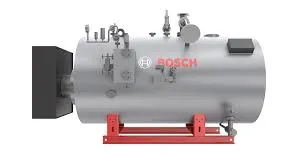
ມ.ຖ. . 04, 2025 09:53 Back to list
Biomass fired steam boiler
Adjusting the water level in a steam boiler is a critical maintenance task that ensures the safety and efficiency of your boiler system. Proper management of the water level prevents potentially dangerous situations such as overheating, dry firing, or even explosions. Whether you're a seasoned engineer or a facility manager, understanding the intricacies of water level adjustment and control can enhance both performance and equipment longevity.
Accurate measurement instruments are crucial for this task. Certified level sensors and transmitters can greatly enhance precision in monitoring. However, in cases of discrepancies between sensor data and gauge readings, a thorough investigation is necessary to eliminate errors. In environments where automation is present, operators should be familiar with the controls and understand the operation of Programmable Logic Controllers (PLCs) or Distributed Control Systems (DCS), which manage the water level. These systems offer enhanced control but require expertise to troubleshoot and adjust where necessary. Moreover, training and certifications for boiler operation are not merely legal prerequisites; they empower operators with the knowledge necessary to intuitively manage complex systems. An operator armed with a robust understanding of thermodynamics and fluid dynamics is distinctly more effective at maintaining optimum operational conditions. Safety cannot be underestimated. Regular safety audits and drills ensure the team is prepared for any unintended deviations in the system. Consider employing redundant systems such as low-water cutoffs and automated blowdown systems for additional safety layers. In conclusion, adjusting the water level in a steam boiler requires a blend of technical expertise, practical experience, and a commitment to safety. Understanding the interaction between water levels, boiler efficiency, and system safety prepares any operator or engineer to make informed decisions, thereby enhancing both operational uptime and safety. Proper training, regular maintenance, and leveraging advanced control systems are the keystones to mastering water level management in steam boilers.


Accurate measurement instruments are crucial for this task. Certified level sensors and transmitters can greatly enhance precision in monitoring. However, in cases of discrepancies between sensor data and gauge readings, a thorough investigation is necessary to eliminate errors. In environments where automation is present, operators should be familiar with the controls and understand the operation of Programmable Logic Controllers (PLCs) or Distributed Control Systems (DCS), which manage the water level. These systems offer enhanced control but require expertise to troubleshoot and adjust where necessary. Moreover, training and certifications for boiler operation are not merely legal prerequisites; they empower operators with the knowledge necessary to intuitively manage complex systems. An operator armed with a robust understanding of thermodynamics and fluid dynamics is distinctly more effective at maintaining optimum operational conditions. Safety cannot be underestimated. Regular safety audits and drills ensure the team is prepared for any unintended deviations in the system. Consider employing redundant systems such as low-water cutoffs and automated blowdown systems for additional safety layers. In conclusion, adjusting the water level in a steam boiler requires a blend of technical expertise, practical experience, and a commitment to safety. Understanding the interaction between water levels, boiler efficiency, and system safety prepares any operator or engineer to make informed decisions, thereby enhancing both operational uptime and safety. Proper training, regular maintenance, and leveraging advanced control systems are the keystones to mastering water level management in steam boilers.
Share
Latest News
-
Coal Fired Thermal Oil Boiler with GPT-4 Turbo Efficiency
NewsAug.03,2025
-
Commercial Steam Boilers for Sale - AI Optimized Efficiency
NewsAug.02,2025
-
Efficient Biomass Fired Hot Water Boiler | AI Heating Solution
NewsAug.01,2025
-
High-Efficiency Gas Thermal Oil Boilers | HPT Models
NewsJul.31,2025
-
Oil Fired Hot Water Boilers Sale - High Efficiency & Affordable
NewsJul.31,2025
-
High-Efficiency Commercial Oil Fired Steam Boiler for Industry
NewsJul.30,2025
Related PRODUCTS
Copyright © 2025 HEBEI HONGZE BOILER MANUFACTURING CO., LTD. All Rights Reserved. Sitemap | Privacy Policy






















